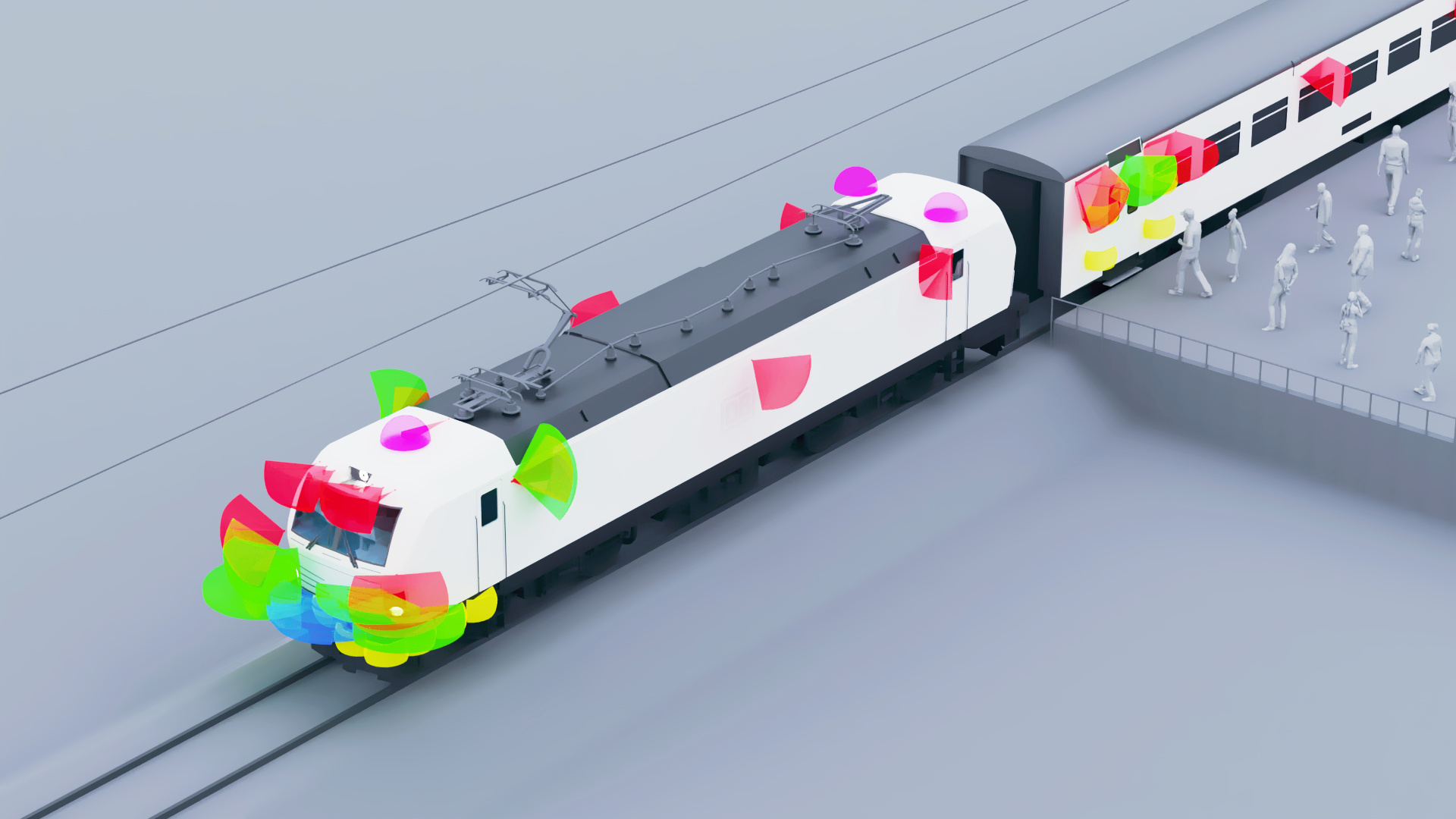
ATO: Sensor technology as a technical prerequisite for ATO functions
A technical driving system, an ATO system with sensors and actuators, is required for automated, rail-bound driving on mainline tracks. This system must be able to fulfill the current tasks of a driver at least to the same extent. First of all, a wide variety of driving situations must be detected (perception) so that suitable actions can be derived from them. These driving situations include Train driving, shunting, passenger management on the platform and dealing with problems in the respective driving situations.
The task of perception has to be performed by suitable sensors. In order to be able to further research and develop the solution approaches and boundary conditions for this, a proposal for a measurement system is being developed in the project, which contains various sensors in the sense of a "superset". These sensors are used to collect data sets for different scenarios in order to make them available for algorithms (-developments) and system tests. The conception of such a measurement system is the main goal of the project.
The sensors considered in the project for typical perception tasks of a train driver are radar, lidar, ultrasound, cameras, microphones, GNSS and other sensors providing environmental information (temperature, humidity, ...). Current research projects and available systems of (autonomous) rail transport were used as a basis for identifying the sensor technologies required for the measurement system. In addition, other technology fields, such as autonomous driving in road traffic or industrial (driverless) transport systems were considered.
In addition to the mere identification of the sensor technology, suggestions of the positioning on the vehicle and their assignment to different perception tasks of the driver, the planned sensors were examined with regard to their market maturity. In addition, research questions were identified which can be explicitly addressed with the sensors; this in particular for an application in the mainline railway sector.
One example of such a research question in the context of radar systems is the question of what influence rails and ballast have on the detection of relevant objects. Another example arises here from the speeds of the mainline railway.
Market-available radar systems in the mobility sector are essentially designed for road traffic. While relative speeds (e.g., of oncoming cars) of 400 km/h are sufficient here, these quickly reach their limits in rail traffic; two oncoming ICEs are mentioned here as an example. Apart from these sensor-specific issues, however, research questions also arise regarding the parallel operation of individual sensors: these relate in particular to mutual interference (disturbances), but also to (novel) sensor fusion options arising from this.
The project was successfully completed with the conceptual design of a measurement system.
